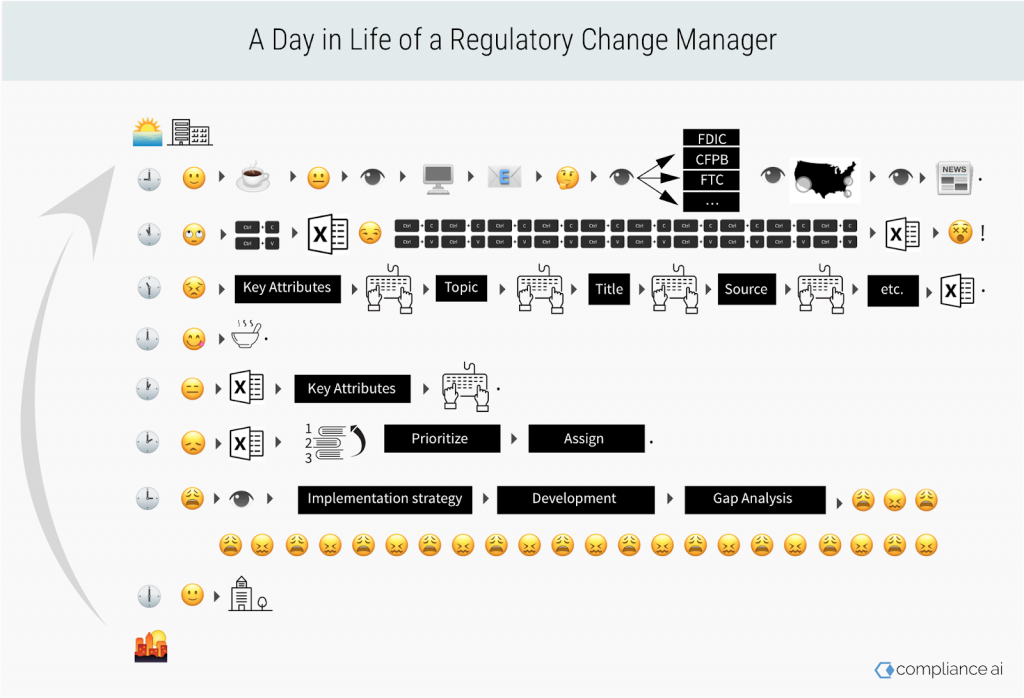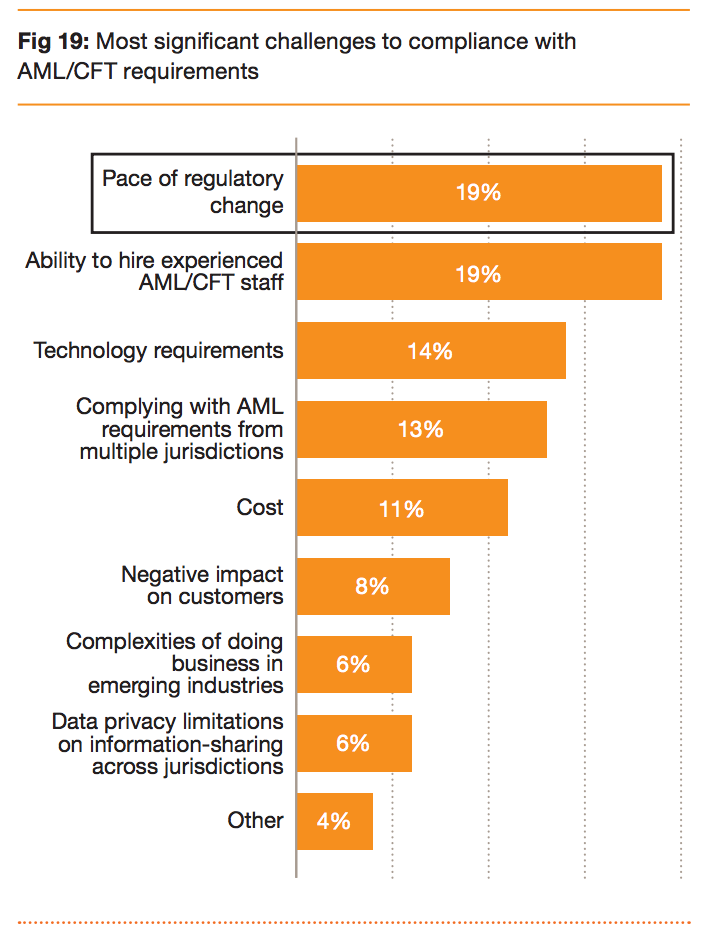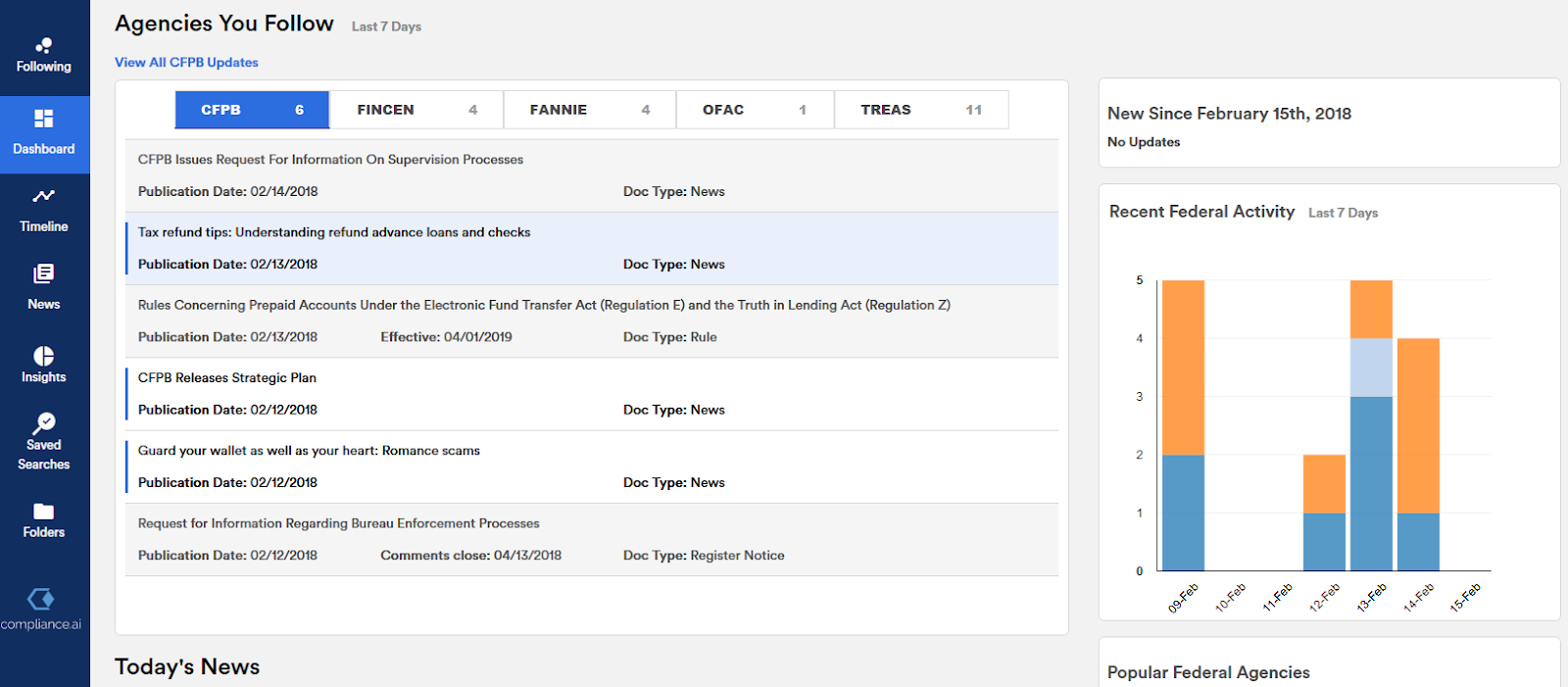Financial Regulatory Intelligence
The goal of financial regulatory intelligence is allow us to understand what is changing on a daily basis, unlike our every day lives. The alarm clock buzzes, and it’s time to face the day ahead. Feet touch the cold morning floorboards and that first sip of coffee hits the soul. Dressed and ready for the commute to work but each day is different from the one before.
For a Bank or any financial institution, addressing regulatory requirements is one of the top priorities. Regulatory Change Management is a dynamic daily responsibility within the Compliance Management System, which we covered in Part Two of this blog series, and relies on aggregating content from a variety of sources in order to complete. A typical morning in the office for a Regulatory Change Manager or Compliance Officer starts with sorting through all the daily information updates and emails. Scanning through your inbox, which by 9:00 AM is already filled to the brim with unread messages, then deciding whether to read, bookmark for later, forward, or delete is a tedious process. There could be, and often there is, a laundry list of regulatory updates and information buried in emails from federal or state level banking organizations, news publications, and other sources. A substantial part of the morning consists of reading and organizing these emails, and that’s just the tip of the iceberg.






